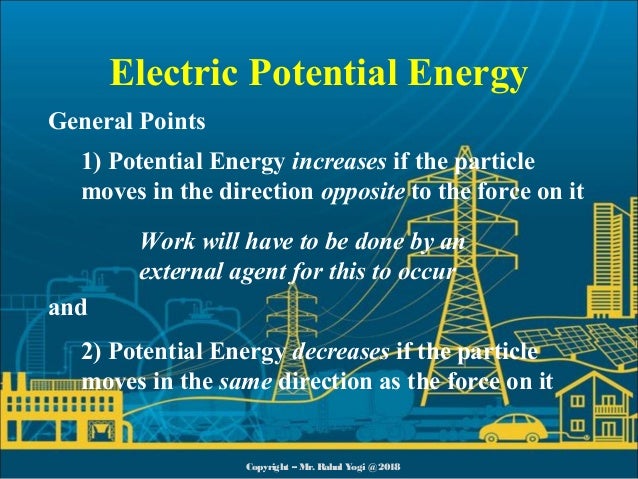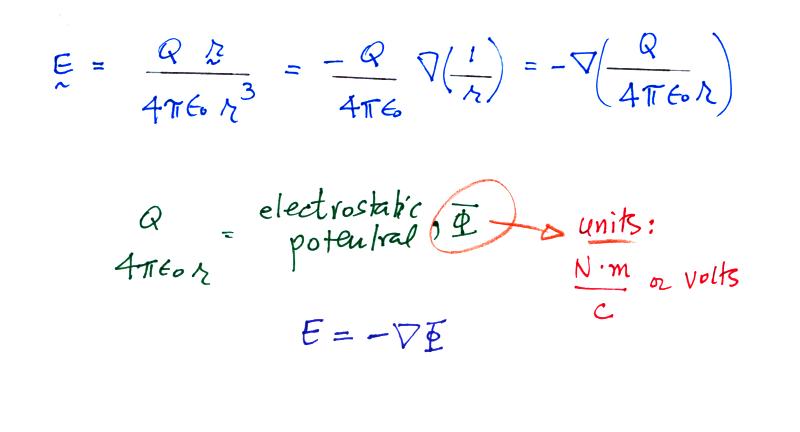

Note above that the flow of ions occurs in opposite directions for the two types of gradients. Where z is the charge on the ion, F is Faraday's constant (96500 coulombs mole-1) and E is the potential difference across the membrane (measured as the potential of the intracellular side with respect to the extracellular side, Vi - Ve). The amount of work dWe required to transport a small number of moles of ions dn against the electrical gradient is given by: (In a cell the charge imbalance occurs only in the immediate region of the cell membrane). for example, if Na+ ions were to move from the extracellular space to the intracellular space downtheir chemical gradient, then there will be a net buildup of positive charge inside the cell which causes a flow of Na+ ions from the intracellular space to the extracellular space downthe electrical gradient. This imbalance causes an electrical gradient to be setup across the cell membrane with a tendency to move ions down the gradient. (1) is valid.Īs a small number of ions move across the cell membrane, carrying either a negative or positive charge, a potential difference is setup across the membrane.

Strictly speaking we should be using activities of X instead of concentrations, but assuming that the activity coefficient is the same on both sides, Eq. Where R is the gas constant (8.314 J deg-1mole-1), T is the absolute temperature. The fundamental equation that describes the amount of work dWc required to transport a small number of moles of ions dn of an ionic species X which exists in concentration e extracelllularly and i intracellularly (with e > i, i.e., up the concentration gradient) is given by thermodynamics.ĭW c = dn RT log e ( e / i ). There will be no change in the bulk concentrations of Na+ ion unless the equilibrium is disturbed. To continue with the example of Na+, during homeostatic equilibrium Na+ ions will go from the intracellular to the extracellular space and vice-versa, except that on average as many will cross over from one side as to the other. During homeostatic equilibrium, the net flow of ions across the membrane is zero, although there will be movement of ions from either side. In the above case, energy has to be expended to move Na+ from the intracellular space to the extracellular space. Movement of an ionic species up it's concentration gradient requires the supply of energy for transport. Therefore channels allowing the passive movement of Na+ ions will favour the transport of Na+ ions from the extracellular space to the intracellular space. For example, Na+ exists in greater concentration in the extracellular space than in the intracellular space. That is, from the side with higher concentration of the ion to the side with the lower concentration. If the membrane is permeable to that species, there will be a movement of ions down the concentration gradient. The consequences of the above statements are immense.Ī difference in the bulk concentration of an ionic species on either side of the membrane sets up a chemical gradientacross the membrane.

The differences in bulk concentrations on either side of the cell membrane are a result of physiological processes. The most important of these species are: Na+, K+, Ca2+, and Cl. (3) During homeostatic equilibrium there is a difference in the bulk concentration of certain ionic species between the intracellular and extracellular regions. Thus the cell membrane is partially permeable and the relative permeabilities for the different ionic species are different. (2) Permeability to ionic species is a result of channels that span the cell membrane allowing one or more ionic species to diffuse across the cell membrane. To understand electrical and chemical gradients from a physiological perspective it is important to first understand that (1) a cell membrane consists of lipid molecules that are non-conducting and act as an impermeable barrier to ionic species such as Na+ and K+, among others.


 0 kommentar(er)
0 kommentar(er)
